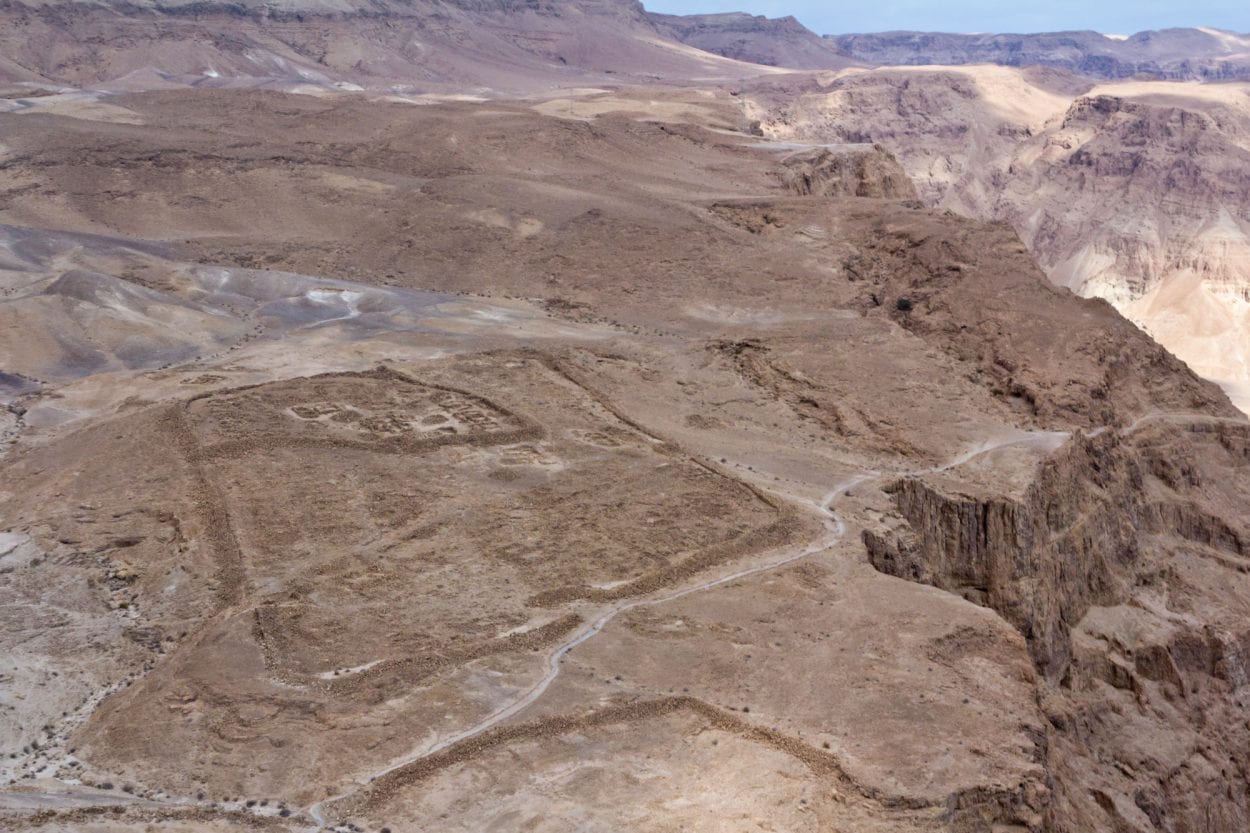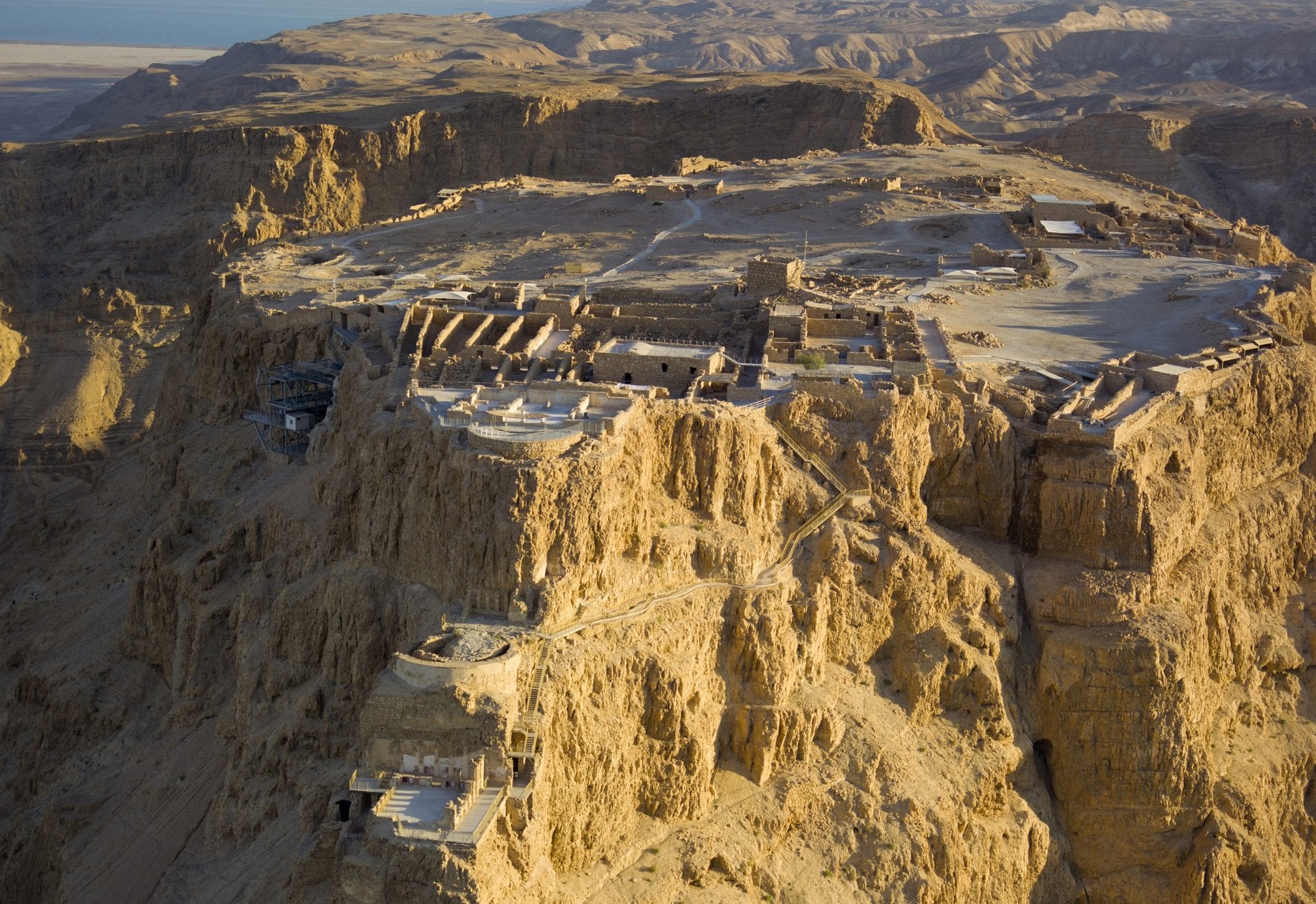The Siege of Masada was one of the final chapters during the First Jewish-Roman War, where Sicarrii rebels and their families were besieged in the mountain palace/fortress of Masada, overlooking the Dead Sea in Israel.
The First Jewish-Roman War, also called the Great Revolt, was the first of several uprisings by the Jewish population of Judea against the Roman Empire. The seeds of the revolt were in response to increasing religious tensions, and high taxation that caused attacks against Roman citizens. In response, the Roman Governor plundered the Second Temple and launched raids to arrest senior Jewish political and religious figures.
This escalated into a wide-scale rebellion, resulting in the Roman garrison of Judea being quickly overrun by the rebels, and the abandonment of Jerusalem by the pro-Roman King Herod Agrippa II and his officials.
At the same time, the fortress of Masada was taken by the Sicarii (meaning “dagger-man”), a splinter group of the Jewish Zealots, and one of the earliest organised groups that specialised in the act of assassination.
The Romans mobilised four Legions (supported by forces of Agrippa) to subdue the rebellion and punish the Jewish people, as an example to others that might follow similar acts of insurrection against the Roman Empire.
The legions reached Jerusalem in AD 70, placing the city under siege for four months. After several battles, the entire city and the Second Temple was destroyed, with contemporary historian Titus Flavius Josephus stating: “Jerusalem … was so thoroughly razed to the ground by those that demolished it to its foundations, that nothing was left that could ever persuade visitors that it had once been a place of habitation.”
View Full Map – Click Here
In AD 72, the legion X Fretensis, commanded by Lucius Flavius Silva marched on Masada to break one of the last strongholds of resistance. The legion was supported by several auxiliary units, and Jewish prisoners of war from the uprising (totalling some 15,000 men and women according to Josephus’s accounts).
The Romans encircled Masada with a circumvallation siege wall running for 6.8 miles around the mountain plateau, supported by a series of fortified encampments, or temporary forts for the soldiers.
After several attempts to breach Masada’s defences, the Roman’s constructed a giant siege ramp scaling the western side of the fortress to a height of 61 metres.
A siege tower and battering ram was slowly moved up the ramp, where on April 16, AD 73 the walls of Masada were breached. What follows has divided historians and archaeologists as to the events that unfolded.

According to Josephus: “it [was] by the will of God, and by necessity, that [they, the Sicarrii] are to die” and that the defenders drew lots and killed each other in turn, down to the last man (as Judaism prohibits suicide). He further stated that their leader, Eleazar ben Ya’ir’s, ordered all provisions to be destroyed, to demonstrate to the Romans that they defiantly chose death over slavery.
Research by several archaeologists such as Kenneth Atkinson states that there is no “archaeological evidence that Masada’s defenders committed mass suicide,” with archaeologist Eric H. Cline further stating that the defenders were most likely massacred by the Romans.
Today, Masada is revered in Israel as a political symbol of resistance and heroism, that in part has played a role in forging a national identity, although some people now see the siege as simply a case of Jewish radicals refusing to compromise, resorting instead to suicide and the murder of their families, both prohibited by Rabbinic Judaism.





